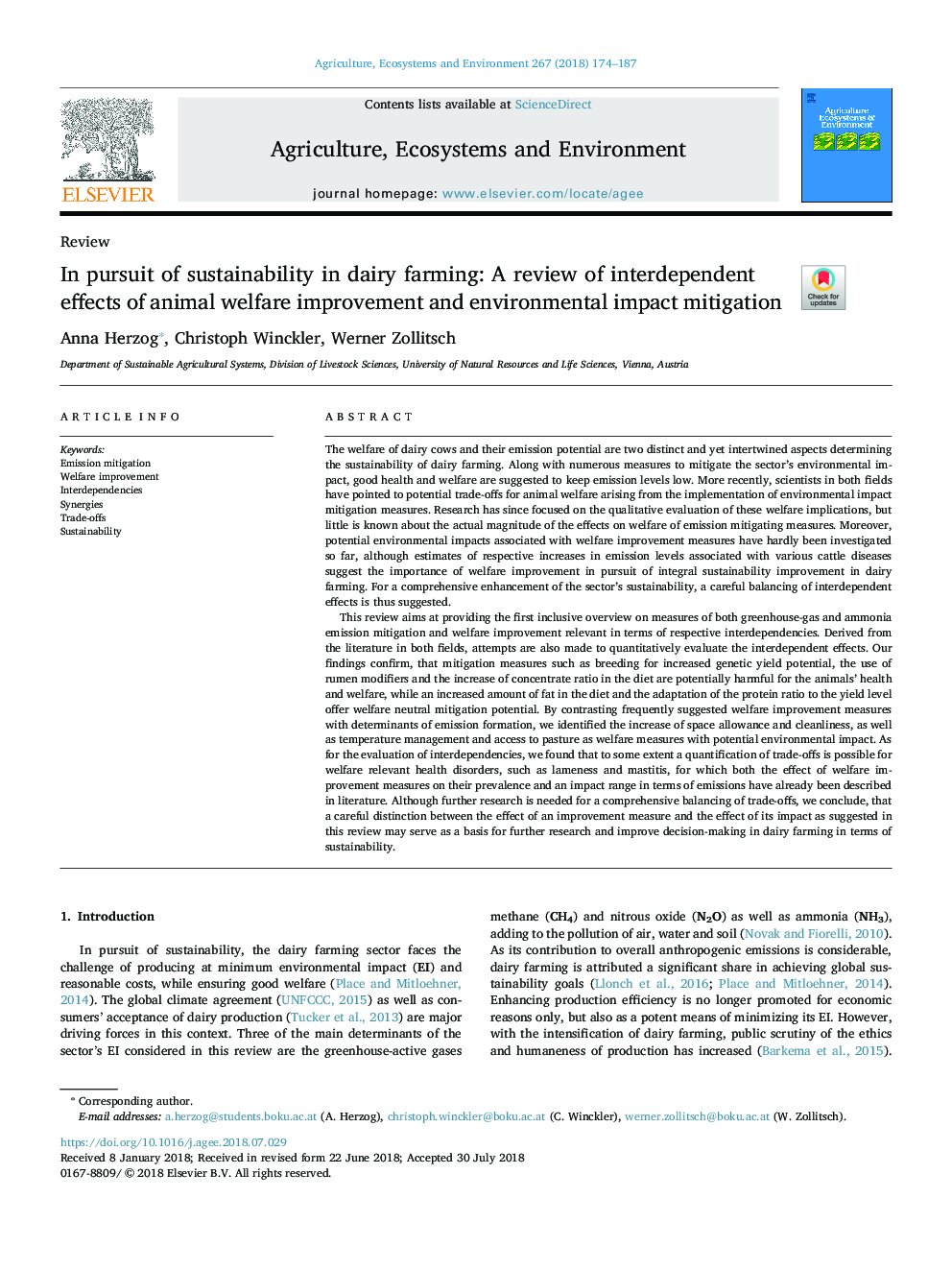| Article ID | Journal | Published Year | Pages | File Type |
|---|---|---|---|---|
| 9954578 | Agriculture, Ecosystems & Environment | 2018 | 14 Pages |
Abstract
This review aims at providing the first inclusive overview on measures of both greenhouse-gas and ammonia emission mitigation and welfare improvement relevant in terms of respective interdependencies. Derived from the literature in both fields, attempts are also made to quantitatively evaluate the interdependent effects. Our findings confirm, that mitigation measures such as breeding for increased genetic yield potential, the use of rumen modifiers and the increase of concentrate ratio in the diet are potentially harmful for the animals' health and welfare, while an increased amount of fat in the diet and the adaptation of the protein ratio to the yield level offer welfare neutral mitigation potential. By contrasting frequently suggested welfare improvement measures with determinants of emission formation, we identified the increase of space allowance and cleanliness, as well as temperature management and access to pasture as welfare measures with potential environmental impact. As for the evaluation of interdependencies, we found that to some extent a quantification of trade-offs is possible for welfare relevant health disorders, such as lameness and mastitis, for which both the effect of welfare improvement measures on their prevalence and an impact range in terms of emissions have already been described in literature. Although further research is needed for a comprehensive balancing of trade-offs, we conclude, that a careful distinction between the effect of an improvement measure and the effect of its impact as suggested in this review may serve as a basis for further research and improve decision-making in dairy farming in terms of sustainability.
Related Topics
Life Sciences
Agricultural and Biological Sciences
Agronomy and Crop Science
Authors
Anna Herzog, Christoph Winckler, Werner Zollitsch,
